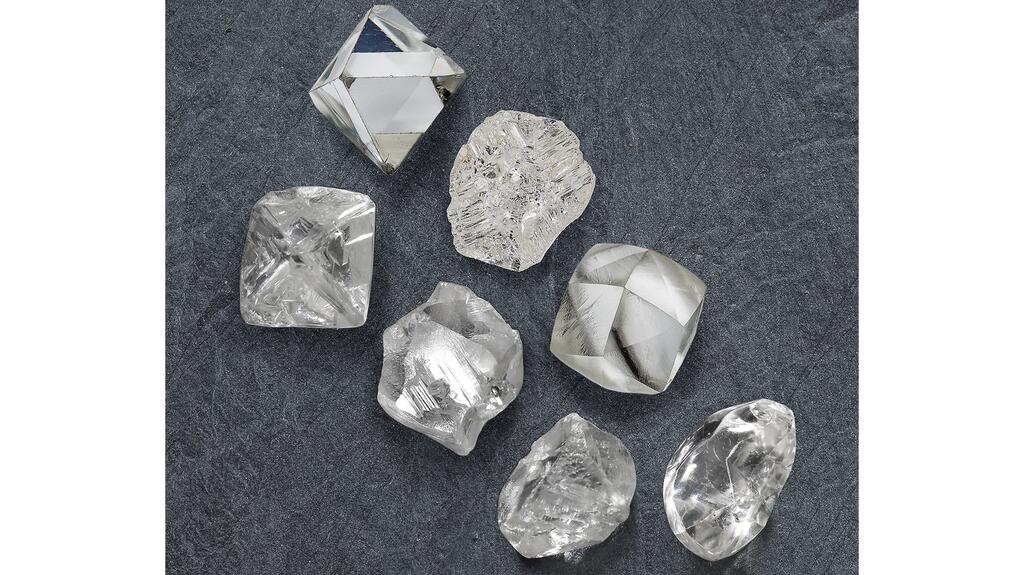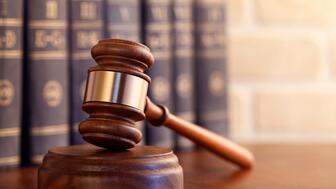Kwiat’s ‘Mine to Shine’ Illuminates the Questions Consumers Might Start Asking
The retail offering, said to be the first of its kind, allows customers to follow a single rough diamond through the cutting process.

You remember those, right?
A couple weeks ago, I had the chance to catch up with Kwiat CEO Greg Kwiat about a new initiative the company just launched, “Mine to Shine.”
Billed by the brand as the first retail offering of its kind, Mine to Shine allows consumers to see their diamond’s journey all the way through, starting from when it was a piece of rough pulled out of the earth.
For the program, Greg said the company is working with a select group of longtime partners, sourcing its diamonds mainly from Botswana, Namibia, South Africa, and Canada.
Those partners, he acknowledged, are sourcing their rough primarily from De Beers Group, as well as from Lucara Diamond Corp., operator of the Karowe mine in Botswana.
Utilizing the companies’ respective technologies—Tracr (De Beers) and Clara (Lucara)—Kwiat and its partners are able to track diamonds from the rough stage, documenting their progress throughout the entire cutting and polishing process.
At the retail level, Greg said Kwiat’s mantra is to “meet the customer where they are at.”
Customers can come in and select a rough diamond that will result in the size and shape of diamond they want. Or they can select a diamond that’s already cut and polished and Kwiat will share with them the stone’s history.
“Luxury today is a broader concept than it was 20 years ago. Today, there’s an authenticity you have to have in order to truly present yourself as luxury,” Greg said when asked to explain the genesis of Mine to Shine.
“[Consumers] care more today about the journey of the products that they buy and the good they may have done along the way … It’s not just about the price or the end product; it’s the story and journey of how that product was created.”

He said some of the change in luxury purchasing behavior can be attributed to a generational shift.
Millennials (now ages 27-42) and their younger predecessors, the up-and-coming members of Gen Z (ages 11-26), are said to care more about the social and environmental impacts of the products they buy.
Greg attributes this in part to there being a lot more conversation about the environment right now, though I would argue that in this summer of record heat and historic flooding, it’s a conversation everyone is at least hearing, even the allegedly disaffected members of my generation, Gen X.
But he pointed out, “This generation is the first to really have that as the starting point of their journey. For people coming of age today, it’s not new; it’s [just] how it is.”
The claim that younger consumers are more socially conscious is one I’ve been hearing for well over a decade and while I don’t necessarily disagree with it, I do wonder how often this interest in ethical origin and environmental stewardship bears itself out at retail.
After all, aren’t these the same consumers who’ve embraced fast-fashion, propelling the rise of companies like Shein, now a $100 billion business?
Anytime I’m at a trade show or a conference and the topic comes up, jewelers mostly tell me that none of their customers really ask about the origin of the diamonds, gold, etc., that’s used to make the jewelry. They’re more concerned with No. 1., price, and No. 2, style.
At Kwiat, Greg said by and large, customers do not regularly ask about origin either, though he noted that may be because they don’t know to ask. He also pointed out that country of origin information for rough hasn’t been available until very recently.
Now that it is, Kwiat wants to be one of the first to share it with consumers because, he believes, they will start asking soon.
“We want to be ahead of it,” he said.
While answering customer inquiries obviously is important for retailers, it’s worth noting that knowing a rough diamond’s country of origin soon will have a more practical application.
As we reported back in February, tighter sanctions on Russian diamonds are coming. A story published this week by The New York Times said a formal announcement is expected next month, with the new sanctions slated to take effect in January.
The tighter sanctions won’t initially include diamonds smaller than 1 carat—which, incidentally, is a lot of what Russian mining giant Alrosa produces—but they will put pressure on diamond companies to be able to prove their larger gems aren’t coming from Russia.
Though I started writing this piece with the intention of not mentioning lab-grown diamonds, I did have to ask Greg if Mine to Shine was at all a reaction to consumers’ growing interest in man-made stones.
While lab-grown diamonds generally do not occupy the same echelon as Kwiat, he did acknowledge that the company, “live(s) in the same diamond industry as everyone else,” so it has to pay attention to the lab-grown market.
“[Mine to Shine] wasn’t specifically done as a reaction to lab-grown but when you factor in where we think lab-grown is going, it’s a good way to stand behind the meaning of natural,” he said.
He concluded, “The lab-grown diamond industry got ahead of the natural diamond industry in telling a certain story,” which was “unfair” because natural diamonds positively impact people all over the world.
The Latest

The couple pleaded guilty to concealing at least $127 million in cash transactions at its precious metals businesses.

Consumers shared concerns about prices, inflation, tariffs, trade, and politics in the survey’s write-in response section.

In February 2026, the auction house will move its headquarters to the former Steinway Hall, a neoclassical landmark on Billionaires’ Row.

How Jewelers of America’s 20 Under 40 are leading to ensure a brighter future for the jewelry industry.

The new show will take place Jan. 23-25, 2026.


The former BHP Billiton leader and Gemfields chairman is remembered for his influential leadership throughout his 50-year mining career.

The LVMH-owned brand has partnered with the costume design union to revamp its award for 2026.

Roseco’s 704-page catalog showcases new lab-grown diamonds, findings, tools & more—available in print or interactive digital editions.

The luxury titan inked a deal to acquire an initial minority stake in the jewelry manufacturer with a pathway to full ownership by 2032.

The company’s curation of unsigned vintage and estate jewelry debuted at the Bloomingdale’s in Costa Mesa, California.

In the recent multi-shipment seizure, CBP also found counterfeit Audemars Piguet, Moncler, and Chrome Hearts items.

Jewelers of America execs and National Jeweler editors discuss tariffs, the sky-high gold price, and the engagement that broke the internet.

The luxury goods company said founder Ippolita Rostagno will remain at the brand’s helm.

Laura Burdese, who joined the Italian luxury brand in 2022, will take on the role in July.

Need a gift for the cat lover who has everything? Look no further than our latest Piece of the Week.

It purchased the “Grosse Pièce,” an ultra-complicated Audemars Piguet pocket watch from the ‘20s, for a record-breaking price at Sotheby’s.

The lab-grown diamond grower now offers custom engagement and fashion jewelry through its Kira Custom Lab Jewelry service.

Chandler got his start at Michelson Jewelers and has served as DCA president and CEO since 2001. He will retire at the end of the month.

The boutique is slated to open this week inside Terminal 8, offering pre-owned Rolex watches and more to international travelers.

Sponsored by Digital Monitoring Products

The special-edition egg pendant ingested in a New Zealand jewelry store was recovered after a six-day wait.

Associate Editor Natalie Francisco plays favorites with Piece of the Week, selecting a standout piece of jewelry from each month of 2025.

The “Love and Desire” campaign is inspired by the magic that follows when one’s heart leads the way, said the brand.

Two awardees will receive free tuition for an educational course at the Swiss lab, with flights and lodging included.

Berta de Pablos-Barbier will replace Alexander Lacik at the start of January, two months earlier than expected.

Sotheby’s held its first two jewelry sales at the Breuer building last week, and they totaled nearly $44 million.

Winners will receive free registration and lodging for its fourth annual event in Detroit.




























